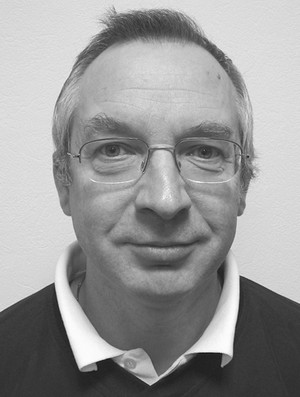Centroidal method of key components to estimate general fitness of golf-players
Фотографии:
ˑ:
Centroidal method of key components to estimate general fitness of golf-players
A.N. Korol'kov, associate professor, Ph.D.
Russian state university of physical culture, sport, youth and tourism, Moscow
Key words: key components, external mechanical work, general fitness, centroidal method, golf.
The purpose of the present paper was to consider centroidal method of key components in estimation of general fitness in golf.
Results of any test of motor activity are obviously a consequence of the information-energy exchange taking place in a body, characterized by the volume, power and effectiveness. Therefore it seems acute to subject test results in the form of energy expenses and information spent while performing this or that motor act.
Results of general fitness tests of pupils of specialized children sport schools of Olympic reserve "Moscow golf school" for 2009, 2010, 2011 (14-17-aged young girls and boys, 20 and 41 persons correspondingly) were used to analyze by means of key components. External mechanical work on displacement of common centre of gravity in other general fitness tests were calculated analytically, in assumption that the length of units and body weight did not change at tests.
Therefore, analysis of the total variance and volume of external mechanical work, performed while performing general fitness tests by orthographic basisfrom key components promotes allocation of the percentage contribution of units and comprising it muscle groups. The results of such an analysis facilitate allocation of priorities in development of muscle groups to achieve high results in general fitness tests. In order to improve sports results in golf priority in development of these or those muscle groups is to be determined in accordance with the data of component analysis of total variance and volume of work in view of trends (mutual correlation) of general fitness test results with the level of sportsmanship of golf-players.
Bibliography
1. Ayvazyan, S.A. Applied statistics. Classification and decrease of size / S.A. Ayvazyan, V.M. Bukhshtaber, I.S. Enyukov, L.D. Meshalkin. – Мoscow: Finansy i statistika, 1989. - 607 P. (In Russian)
2. Volkov, N.I. Biochemistry of muscle work: textbook for students of universities of physical education and sport /N.I. Volkov [et al.]. – Kiev: Olimpiyskaya literatura, 2000. – 503 P.: ill. (In Russian)
3. Godik, M.A. Factor structure of footballers' special preparedness / M.A. Godik, E.V. Skomorokhov // Teoriya i praktika fizicheskoy kultury. – 1981. – № 7. – P. 14–16. (In Russian)
4. Godik, M.A. On training technique of physical status of children /M.A. Godik, T.A. Shanina, G.F. Shitikova // Teoriya i praktika fizicheskoy kultury. – 1998. – № 8. (In Russian)
5. Godik, M.A. Comments to the paper by D. Popovich et al: Factor analysis as an alternative method of allocation of morphological characteristics / M.A. Godik // Teoriya i praktika fizicheskoy kultury. – 1991. – № 3. – P. 57–58. (In Russian)
6. Guts, A.K. Mathematical methods in sociology / A.K. Guts, Yu.V. Frolova. – 2nd ed. – Мoscow: LKI, 2010. – 216 P. (In Russian)
7. Zatsiorsky, V.M. The basics of sports metrology / V.M. Zatsiorsky. Мoscow: Fizkultura i sport, 1979. – P. 65. (In Russian)
8. Zatsiorsky, V.M. Discriminative biomechanical characteristics at middle-distance running / V.M. Zatsiorsky, N.A. Yakunin, N.G. Mikhaylov // Teoriya i praktika fizicheskoy kultury. – 1982. – № 4. – P. 14–17.(In Russian)
9. Kulaichev, A.P. Means and methods of integrated data processing: study guide / A.P. Kulaichev. – 4th ed. rev. and comp. – Мoscow: FORUM: INFRA-M, 2010. – 512 P.: ill. (In Russian)
10. Linnik, Yu.V. The least-square method and the basics of mathematical-statistical theory of processing of observations / Yu.V. Linnik. – 2nd ed. – Мoscow, 1962. (In Russian)
11. Lowly, D. Factor analysis as a stistical method / D. Lowly, A. Maxwell. – Мoscow: Mir, 1967. – P. 144. (In Russian)
12. Tyupa, V.V. Running biomechanics: (mechanical work and energy): study guide for students of SCOLIPC /V.V. Tyupa, E.E. Arakelyan, Yu.N. Primakov; SCOLIPC. – Мoscow, 1990. – 97 P. (In Russian)
13. Utkin, V.L. Biomechanics of physical exercises: study guide for students of faculties of physical education of ped. inst-tes and int-tes of physical culture on the speciality № 2114 "Physical education". – Мoscow: Prosveschenie, 1989. – 210 P.: ill. (In Russian)
14. Khodakova, N.P. Information technologies in work with students pf preschool university education / N.P. Khodakova. – Мoscow: RSUPC, 2006 – 131 P. (In Russian)
15. Shirkovetz, E.A. Physical activity and age dynamics of factor structure of exercise performance / E.A. Shirkovetz, A.Yu. Titlov // Teoriya i praktika fizicheskoy kultury. – 2003. – № 10. – P. 56–59. (In Russian)
16. Routledge handbook of biomechanics and human movement science/ Edited by Joulian Hong and Roger Bartlett./ First published 2008, 2 Park Square, Milton Park, Abingdon, Oxon, OX14 4RN.


